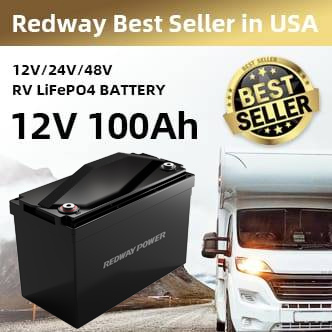What is a replacement forklift battery? A replacement forklift battery is a new power unit designed to replace an old or degraded one in electric forklifts. It ensures consistent performance, reduces downtime, and maintains operational efficiency. Key factors include voltage, capacity, size, and compatibility with your forklift model.
What Are the Key Factors When Selecting a Replacement Forklift Battery?
Choose a battery matching your forklift’s voltage, ampere-hour (Ah) capacity, and physical dimensions. Compatibility with charging systems, cycle life, and warranty terms are critical. For example, a 48V/600Ah battery suits heavy-duty use, while lithium-ion options offer faster charging and longer lifespans than lead-acid.
Which Battery Chemistry Is Best for Forklift Replacement: Lead-Acid or Lithium-Ion?
Lithium-ion batteries outperform lead-acid in lifespan (2–3x longer), charging speed (no cooling breaks), and energy density. However, lead-acid remains cost-effective for low-budget operations. Lithium-ion’s higher upfront cost is offset by lower maintenance and energy savings over time.
How Much Does a Replacement Forklift Battery Cost?
Lead-acid batteries cost $2,000–$8,000, while lithium-ion ranges from $10,000–$25,000. Prices vary based on capacity, brand, and accessories like battery trays or chargers. Consider total cost of ownership: lithium-ion’s 10-year lifespan vs. lead-acid’s 3–5 years.
How to Maintain a Replacement Forklift Battery for Longevity?
Water lead-acid batteries weekly and avoid deep discharges. For lithium-ion, avoid extreme temperatures and use compatible chargers. Both types benefit from regular cleaning and terminal inspections. Proper maintenance can extend lifespan by 20–30%.
For lead-acid batteries, implement a strict watering schedule using distilled water to prevent sulfation. Use a refractometer to check electrolyte levels monthly. Lithium-ion batteries require state-of-charge monitoring—avoid storing them below 20% capacity. Both chemistries benefit from temperature-controlled storage (ideally 59°F–77°F) to minimize capacity loss. Advanced battery management systems (BMS) can automate voltage balancing and thermal regulation, reducing manual intervention by up to 40%.
| Maintenance Task | Lead-Acid | Lithium-Ion |
|---|---|---|
| Watering Frequency | Weekly | Not Required |
| Optimal Charge Level | 50-80% | 20-90% |
| Inspection Interval | Monthly | Quarterly |
What Safety Precautions Are Essential for Forklift Battery Replacement?
Wear PPE (gloves, goggles) to prevent acid burns or electrical shocks. Use lifting equipment for heavy batteries, ensure ventilation to disperse hydrogen gas, and follow OSHA guidelines for handling and storage.
How Does Battery Recycling Impact Environmental Sustainability?
Lead-acid batteries are 99% recyclable, but improper disposal risks soil contamination. Lithium-ion recycling is complex but reduces reliance on raw materials like cobalt. Partner with certified recyclers to meet EPA regulations and reduce carbon footprints.
What Warranty and Support Options Should You Expect?
Look for warranties covering 1,500–3,000 cycles or 3–10 years. Leading brands like Crown and EnerSys offer 24/7 support, capacity guarantees, and prorated replacement terms. Verify if labor costs are included.
Can You Retrofit Older Forklifts with Modern Replacement Batteries?
Yes, but confirm voltage compatibility and tray dimensions. Lithium-ion retrofits may require charger upgrades. Consult manufacturers like Redway Power for custom trays and BMS integration to avoid forklift modifications.
What Innovations Are Shaping Future Forklift Battery Replacements?
Solid-state batteries, AI-driven charging algorithms, and hydrogen fuel cells are emerging. For example, Toyota’s “thin” lithium-ion packs reduce weight by 25%, while IoT-enabled batteries predict failures via cloud analytics.
Hydrogen fuel cells are gaining traction in multi-shift operations, offering 5-minute refueling and zero emissions. Modular battery designs allow partial replacements—swap degraded cells instead of entire packs. Wireless charging pads embedded in warehouse floors enable opportunity charging during brief stops. These innovations could reduce fleet energy costs by 60% by 2030. However, infrastructure upgrades remain a barrier—only 12% of warehouses currently have hydrogen refueling capabilities.
| Technology | Advantage | Current Adoption |
|---|---|---|
| Solid-State Batteries | 40% Higher Energy Density | Pilot Phase |
| AI Charging | 15% Longer Cycle Life | 35% of New Models |
| Hydrogen Hybrids | Zero Downtime | 8% of Large Fleets |
“The shift to lithium-ion is irreversible. Our clients see 40% energy cost savings and 15% productivity gains from faster charging. However, retrofitting requires precise engineering—always validate thermal management systems before upgrading older fleets.”
— Redway Power Solutions Engineer
Conclusion
Selecting a replacement forklift battery involves balancing cost, chemistry, and operational needs. Lithium-ion dominates for high-use environments, while lead-acid suits budget-focused operations. Prioritize warranties, recycling programs, and compatibility to maximize ROI.
FAQ
- How long does a forklift battery last?
- Lead-acid: 3–5 years (1,500 cycles). Lithium-ion: 8–10 years (3,000+ cycles).
- Can I replace a lead-acid battery with lithium-ion?
- Yes, if voltage matches and chargers are updated. Consult OEM guidelines.
- What is the weight difference between lead-acid and lithium-ion batteries?
- Lithium-ion is 30–50% lighter, reducing forklift strain and improving maneuverability.



